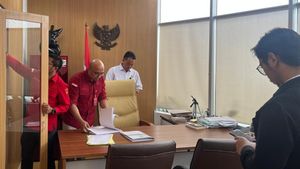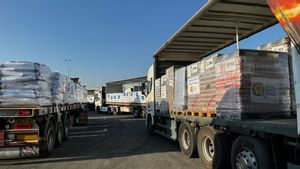JAKARTA - The Central Meteorology, Climatology and Geophysics Agency (BMKG) predicts that areas such as Banten, DKI Jakarta, West Java and Central Java are included in the alert category with the potential for heavy rain.
Heavy rain, according to BMKG, could result in flooding or flash floods in the period 8-9 February.
The Head of the BMKG Public Meteorology Center A. Fachri Radjab said that apart from the La Nina phenomenon there are also other atmospheric dynamic factors that affect the increase in the intensity of extreme rainfall in several regions in Indonesia.
The warning about Indonesia's rainy season affected by La Nina has been issued since October 2020. This phenomenon is still ongoing today with moderate intensity. This results in a wetter rainy season in Indonesia.
"Apart from the dynamics of the atmosphere, which also affects the growth of rain clouds in Indonesia, among which the Asian monsoon is currently still being detected and areas where winds meet over Indonesia's territory," said Fachri Radjab, quoted by Antara, Monday, February 8.
He supposes that the phenomenon of wind encounters is like vehicles meeting at a crossroads, which can cause buildup. With the meeting of the winds over Indonesia and the temperature getting colder, clouds will form.
The meeting area emerged in Indonesia itself because the Asian monsoon entered the south due to the low pressure areas in northern Australia.
"That's why many wind meeting areas are formed over Indonesian territory," he added.
In addition to global La Nina factors and regional factors that cause wind meeting areas, Fachri also explained the existence of local factors.
The local factor causing the increase in extreme rainfall is the stability of the air which tends to be unstable or easily lifted, which can form clouds. The cloud convection process, he said, was quite strong because of the unstable air.
"The combination of the three scales has formed a lot of rain clouds in Indonesia," said Fachri.
Apart from the four provinces that were included in the alert category, BMKG also categorized Bengkulu, Lampung, DI Yogyakarta, East Java, Bali, West Nusa Tenggara, East Nusa Tenggara, Central Sulawesi, South Sulawesi, West Papua and Papua in the alert category.
The English, Chinese, Japanese, Arabic, and French versions are automatically generated by the AI. So there may still be inaccuracies in translating, please always see Indonesian as our main language. (system supported by DigitalSiber.id)













